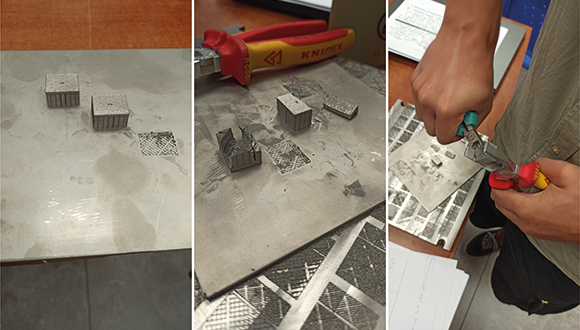Mon, 20 February, 2023
NSIRC and Brunel University London PhD student Antonios Dimopoulos has published his latest research in the peer reviewed Journal of Manufacturing and Materials Processing (JMMP).
Antonios is currently in the 2nd year of his PhD, and has completed a placement at Kanfit3D in Israel. His doctoral degree is sponsored by Lloyd’s Register Foundation (LRF).
The research is being carried out with Industrial Supervision from Professor Tat Hean Gan, Director of Membership and Innovation at TWI Ltd, and Dr Panagiotis Chatzakos, Regional Manager and Director of Essex AI, an innovation centre dedicated to the advancement of artificial intelligence with industrial application, based at TWI Hellas in Athens, Greece.
Antonios' PhD Research Poster from the NSIRC Research & Innovation Conference 2022
About Antonios' latest research publication in JMMP, his supervisor Professor Tat-Hean Gan said, “Antonios' research is providing industry and academia with the insight that neither could have achieved alone. Across both sectors, there are many avenues for this research, and as Antonios’ Industrial Supervisor, I am able to provide feedback and opinion that I know represents real world applications.
"These considerations can help to enrich Antonios’ studies and increase the subsequent impact of his findings. We are very pleased with his ongoing PhD studies, and inclusion in this important journal is testament to the quality of his research.”
Overview of the Research Article
Laser Powder Bed Fusion (LPBF) is one of the most commonly used and rapidly developing metal Additive Manufacturing (AM) technologies for producing optimized geometries, complex features, and lightweight components, in contrast to traditional manufacturing, which limits those characteristics.
However, this technology faces difficulties with regard to the construction of overhang structures and warping deformation caused by thermal stresses.
Producing overhangs without support structures results in collapsed parts, while adding unnecessary supports increases the material required and post-processing.
 Images from Antonios Dimopoulos' experiments at Kanfit3D. Photo: Antonios Dimopoulos
Images from Antonios Dimopoulos' experiments at Kanfit3D. Photo: Antonios Dimopoulos
Antonios said, "This article investigates and evaluates the various support and process parameters for metal LPBF systems, proposing optimized support structures that minimize the support volume, while supporting removal effort and warping deformation"
The optimization approach was based on the design of experiments methodology and multi-response optimization, by 3D printing and studying overhang geometries from 0° to 45°. For this purpose, EOS Titanium Ti64 Grade 5 powder was used, a Ti6Al4V alloy commonly employed in LPBF.
On 0° overhangs, the optimum solution was characterized by an average Tooth Height, large Tooth Top Length, low X, Y Hatching, and high Laser Speed, while for 22.5° and 45° overhangs, it was characterized by large Tooth Height, low Tooth Top Length, high X, Y Hatching, and high Laser Speed.
He added, "The findings will allow the readers not only to understand the significance of metal support structures in LPBF, but also to adopt an innovative design approach for effortless, reliable, and sustainable Additive Manufacturing."